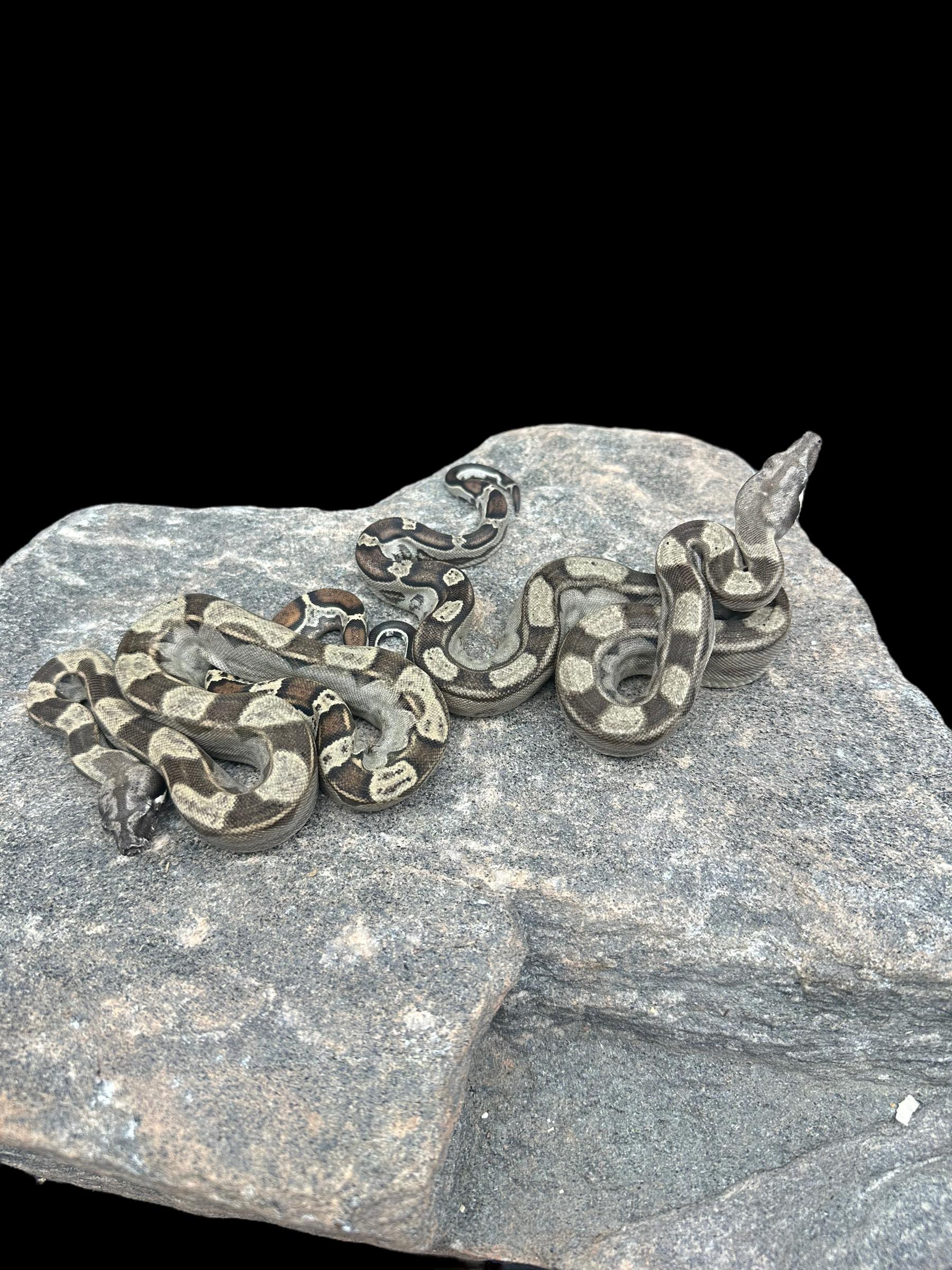Photo Disclaimer
Description
Boa Constrictor Imperator (BCI)
Boa constrictor imperator
Morph: Motley Het VPI
Species Overview
-
Size: Boa constrictor imperator typically grow 6–8 feet (1.8–2.4 m), with females generally larger than males. Adults usually weigh 15–30 pounds depending on genetics and husbandry.
-
Appearance: This boa expresses the Motley trait, a co-dominant mutation that produces connected saddles, dorsal striping, or reduced patterning. It is also Het VPI Albino, meaning it carries but does not visually display the recessive VPI Albino gene. Outwardly, it appears as a Motley boa.
-
Distribution: The natural Boa constrictor imperator ranges from Mexico through Central America into Colombia.
-
Habitat: Wild BCIs inhabit tropical forests, savannahs, scrublands, and river systems.
-
Behaviour: Nocturnal ambush predators that feed on small mammals, birds, and reptiles. Juveniles may climb regularly, while adults are primarily terrestrial.
Captive Care
-
Enclosure: A naturalistic enclosure is recommended. Adults should be housed in at least a 6′ × 2′ × 2′ setup with secure hides, cork bark, climbing branches, and plant cover. Bioactive setups with soil-based substrate, live plants, and leaf litter provide stable humidity and enrichment.
-
Temperature & Humidity: Maintain a gradient of 80–85°F (27–29°C), with a basking spot of 88–92°F (31–33°C). Nighttime drops to 75–78°F (24–26°C) are acceptable. Humidity should remain 55–70%, with access to fresh water for soaking.
-
Diet: Juveniles feed every 7–10 days on small rodents; adults every 14–21 days.
-
Behaviour in Captivity: Motley boas are hardy and generally adapt well to captive life. They may show strong feeding responses but usually tolerate handling once acclimated.
-
Special Considerations: While selective breeding has produced a wide variety of morphs, their core care requirements remain identical to standard Boa constrictor imperator.
Genetics Note
The Motley Het VPI involves:
-
Motley (co-dominant, expressed): Produces connected saddles, striping, or reduced patterns.
-
⚠️ Note: The homozygous form (“Super Motley”) is generally considered fatal in boas and does not produce viable offspring.
-
-
Het VPI Albino (recessive carrier): Carries but does not visually display the VPI Albino trait.

